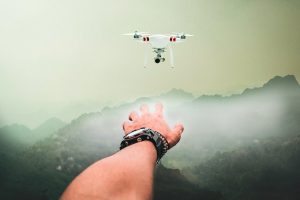Table of Contents
Introduction
Modern drones built and programmed with an auto-return or return-to-home functionality are now becoming more common and more preferred by most consumers and drone enthusiasts. The auto-return is indeed a very helpful feature to avoid losing track of your drone and losing connection as well. Having this functionality will also help you avoid crashes and have your drone getting lost in some tree or roof.
This article will be focused on this very helpful and impressive functionality so that we will be mainly talking about drones with auto-return, how does this work, and other important information that you might want and need to know. So, sit back, relax and read on!
Auto-return in a drone
As mentioned above, auto-return or return-to-home is a very useful and safe function that helps you have your drone back to a place near you for a safe and accessible location. When used or activated, the auto-return feature in your drone will fly it back to its starting location or the location of the remote control. They are GPS-enabled; that is why they will be able to identify the pilot’s location or any location specified by its owner. We can say that those drones with an auto-return feature are the best there is.
Aside from having your drone back to you in an effortless manner, the auto-return feature will also help you avoid losing track of your drone that may result in crashing and damages. No one would ever want to lose their drone, right? That is why GPS and an auto-return feature is indeed very helpful. A fully functional autopilot is also available with the best auto-return drones, and this can help your drone flying adventures a lot safer and easier.
What is GPS?
Now that we have discussed the auto-return features of drones, you might have commonly or frequently heard of GPS being related to this feature. GPS is the Global Positioning System that utilizes satellites to provide the geolocation information to any receiver on the planet. A drone equipped with GPS can be easily located and will have a more advanced and reliable auto-return or return-to-home feature. There are also a lot of things that GPS can positively contribute to your drones functions and efficiency.
Recognizing good GPS in drones
If your drone has good GPS quality, it should return to home in a precise manner and hover in the same spot without too much movement. A good GPS will also avoid your drone from circling too much in its initial location. The auto-return or return-to-home feature of your drone will also be very precise if your GPS is working very well.
Making my drone return home
The auto-return or return-to-home function of your drone may be initiated by one of these three methods:
-
- Through the One-Key return button
is commonly found in cheaper drones with no built-in GPS function. This works by having the drone retrace the flight path it took to find its way back to you. This is not very accurate and is sometimes referred to as “pseudo-RTH.”)
- The auto-return function can also be activated when the signal between the drone and the remote controller becomes interrupted or lost. This is the most common and quick way to trigger the auto-return or return-to-home function in your drones. Once the drone gets way out of your controller’s reach, it will automatically make its way back to its designated landing location. This will prevent you from losing your drone and unwanted crashing.
- More advanced drones will have smart batteries with a system that estimates how much battery is needed for the drone to be able to go back to its initial position safely. Once the battery has reached the minimum level, it will trigger the auto-return function to ensure that the drone can safely go back to its owner or anywhere near its initial position to be easily retrieved.
Setting a safe altitude and landing option will go hand in hand with the auto-return function to ensure that your drone can go back to you safely.
Hover in place – Drone hovering
When it comes to flying your drone, you will always have to deal with the drone moving or swaying with the wind, and that can be not very pleasant and challenging at the same time. If you are an experienced drone pilot or user, you may have already developed the skill of keeping your drone under control and gently have it hover in a certain place. Hovering is crucial when it comes to efficient capturing of areal and photos and videos. It is also vital if you want to avoid your drone from drifting away and eventually become out of range of control. Most drones nowadays already have built-in sensors that help improve stabilization when it comes to hovering. A GPS function or optical sensors usually assist these sensors. However, it is always important to learn how to effectively have your drone hover nicely and safely, just if these stabilization systems fail.
To start, you might want to fly your drone at a comfortable distance and keenly observe its movement and drifting from its initial position. You must stay focused and keep your eyes on the drone while adjusting its roll and pitch to counteract any movement brought about by the wind effectively. You can determine how well you have maintained the hover by focusing your drone’s camera on a specific spot and use it as a reference. Learning how to hover might be challenging and equally frustrating at the same time. All you need to do is practice and until it becomes a lot easier to do. Never get tired of practising until you get comfortable hovering off the ground as well as landing gently and safely.
Drones and automated flying – can drones fly automatically?
Most modern drones boast an automated flying option or self-flying modes to improve your drone flying experience. The most popular mode nowadays is the “Follow-Me” function, and there may be a few ways to tweak or initiate for your drone to be able to fly automatically. Automatic flying will not take place without direct human input or programmed instructions from the drone’s system.
Watch this video to determine and understand how exactly an autonomous drone can fly.
Final thoughts
The auto-return or return-to-home function is indeed a very useful feature for drones, especially when you are concerned about your drone’s safety and easy retrieval. Nobody wants to lose their drone because of a flyway or loss in connection, but you can stop those unwanted events from happening with the auto-return option. It is a good thing that you will not have difficulties in finding drones with impressive auto-return functions since most modern drones already come with one. We believe that you would not mind spending a few more bucks to ensure that you will not be losing or crashing your drone in the long run. Having a drone that flies back to you or can be easily recovered is truly something that every drone enthusiast can appreciate and be very much willing to spend on.

